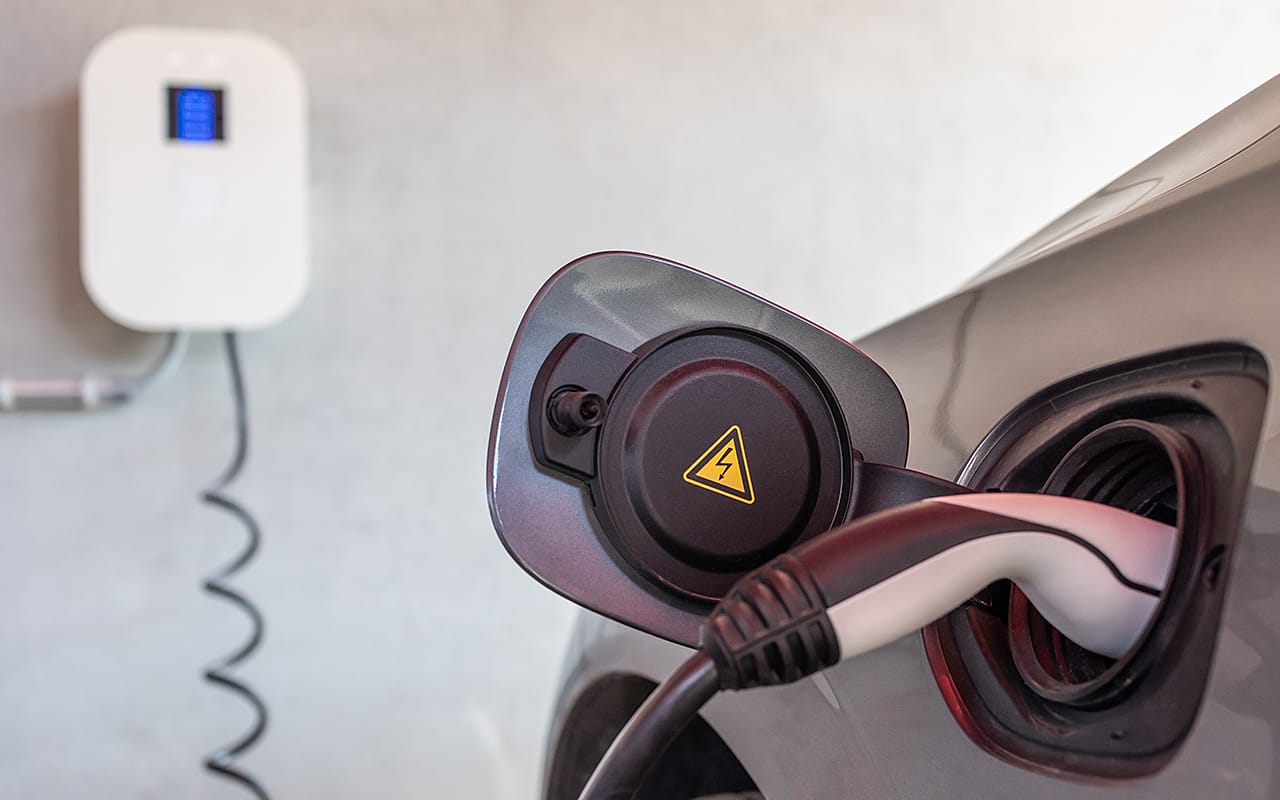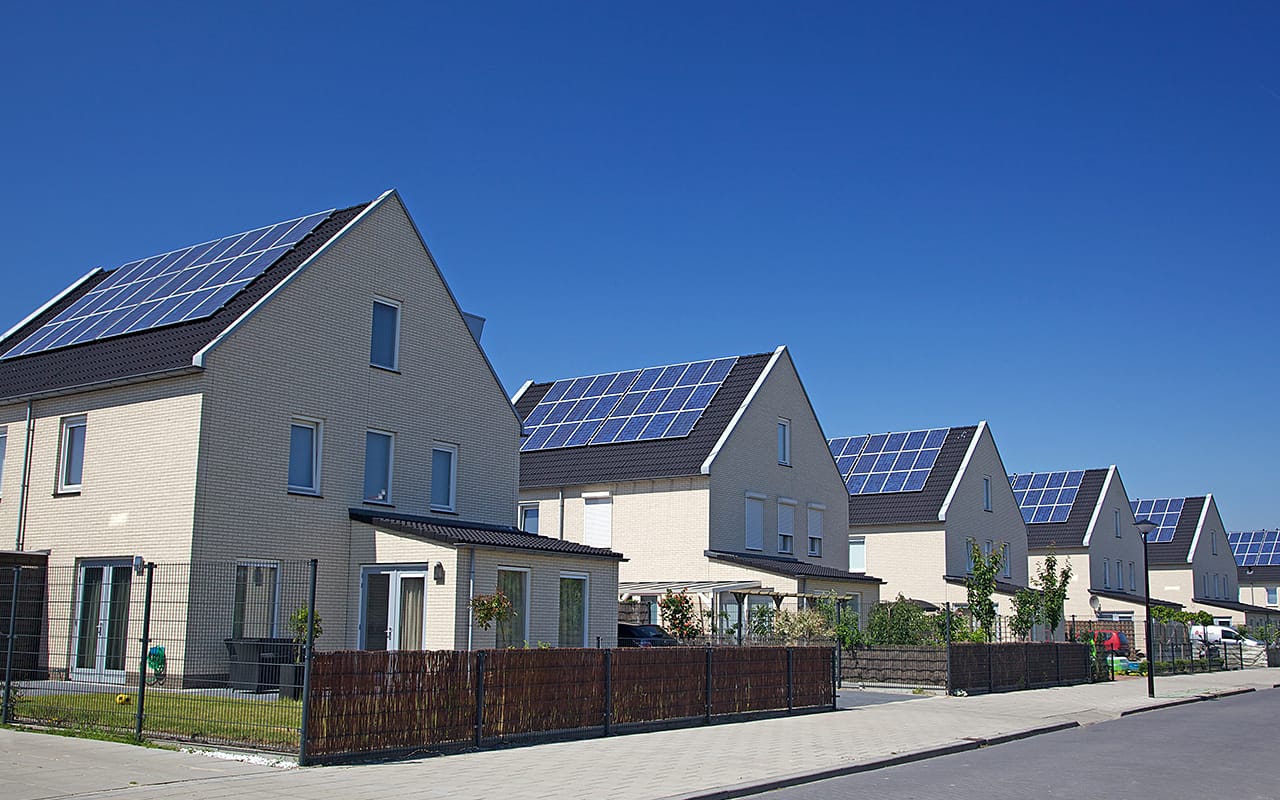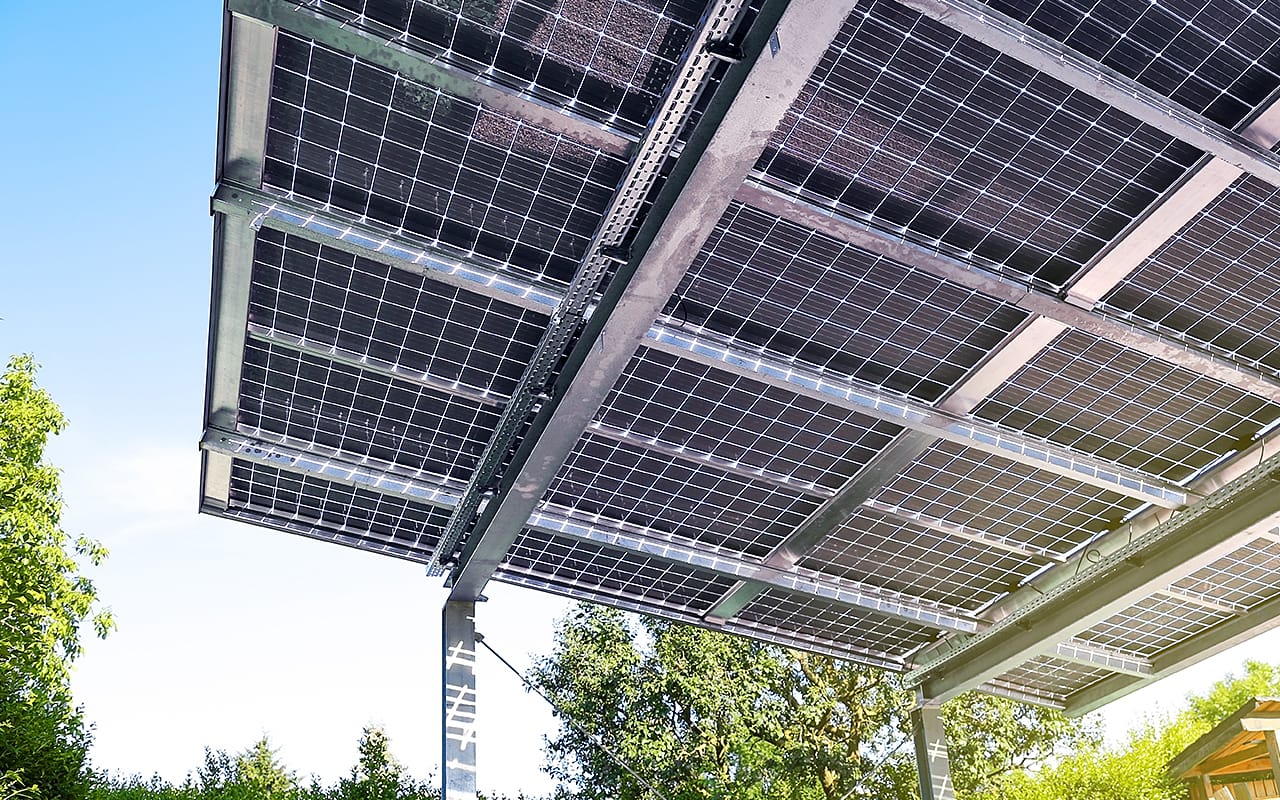Advantages PV-insertion system: The better choice for photovoltaic systems

Since the beginning of commercial photovoltaic installation, most rooftopPV systems have been installed with a conventional clamping system. This means that two aluminium clamps are screwed to the long or short module side with a rail underneath. Nowadays, however, PV insertion systems with insertion rails are also increasingly used for module installation. Increasingly seen especially on commercial photovoltaic systems with sheet steel roofing and private houses with tile roofing.
Thermal expansion of PV-Aanlagen
While the aesthetic aspect of photovoltaic insertion systems plays the main role on private tiled roofs, the technical advantages of roofs with steel roofing are in the foreground. In addition to the individual advantages of a PV insertion system, simple but essential physical conditions must be met in the best possible way. This concerns the thermal expansion of the roof and the mounting system. On a steel roof, e.g. a trapezoidal roof with photovoltaics, this causes great stresses between the steel roof and the aluminium PV mounting system, as the coefficient of linear expansion of aluminium is approximately twice as high as that of steel. This means that if the photovoltaic system was built in summer, the roof will contract twice as much in winter as the aluminium of the mounting system, or if installed in winter, it will expand twice as much in summer. In addition, there is thermal expansion due to day and night temperatures.
Problems with conventional clamping systems
A mounting system that is firmly screwed to the roof, where the rails are firmly connected to the roof, therefore has no chance of yielding to or compensating for thermal expansion in any way and thus generates enormous stress points. On the one hand, at the roof fixing points where the mounting system is connected to the roof, and on the other hand, at the module clamps with which the PV module is screwed to the mounting system.
-
Tension between roof and mounting system
The stresses can negatively affect the holding force of a screw or rivet over a longer period of time, as screw or drill holes can experience permanent deformations, so that in the worst case the connection gives way. In a static comparison with riveted connections, screw connections in particular have a higher risk here, as rivets can withstand significantly higher shear and suction forces due to the expansion on the inside of the steel roof and can thus better ensure the tightness of the connection.
-
Tensions between clamp connection and solar module
There are several risks here. On the one hand, in extreme cases, the clamp can loosen from the module and thus no longer guarantee the fixation of the module. On the other hand, voltages can discharge onto the PV module, which can lead to glass breakage or micro-cracks in the cells as a long-term consequence.
Advantages of the PV insertion system
The floating mounting of the PV insertion system not only avoids damage to the PV system due to thermal expansion, but also enables the complete use of roof areas due to this property, as thermal separation of module fields (e.g. after every 12 metres) is no longer necessary. In our example, we show the photovoltaic installation on a roof with trapezoidal sheet metal covering.
-
Separate expansion of the materials possible
The PV insertion system TRI-STAND can be connected to the trapezoidal roof by means of a rivet or screw connection, whereby the rivet connection is usually used primarily. In this case, an aluminium plate (Safeclick) with a rail receptacle on the upper side serves as the roof fixation. Here, by clicking in the module profile (insert profile), a screwless, floating connection is created. This allows the different expansion of steel and aluminium to take place independently of each other. This puts much less strain on the riveted or screwed connection.
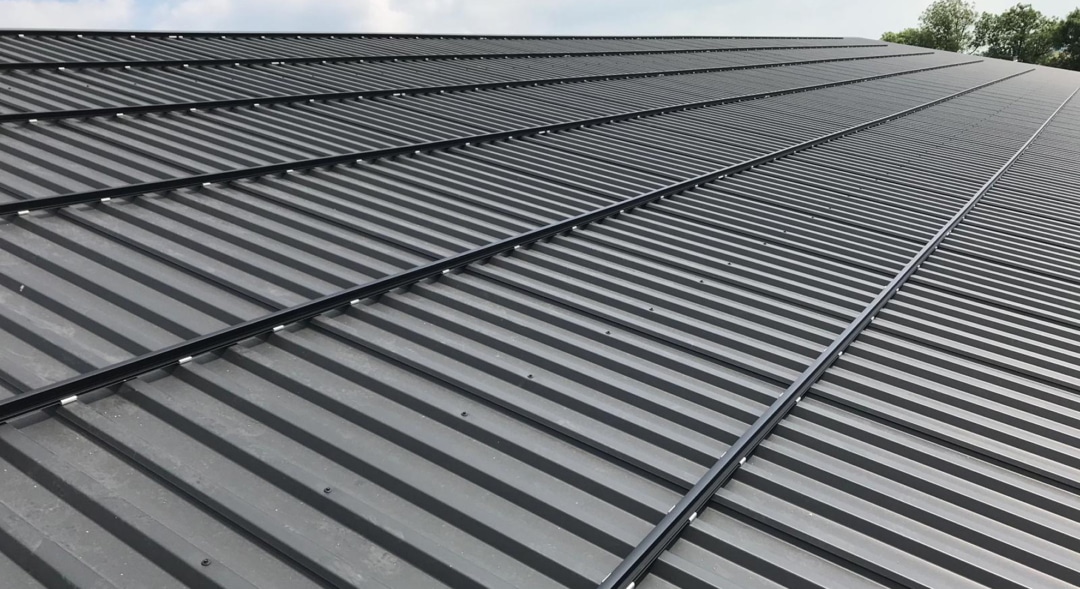
-
Floating storage of the solar modules
In contrast to a clamping system, in an insertion system the PV module is not fixed to the mounting system by means of a clamping device, but, as the name already suggests, is only inserted into the horizontal rail and is thus also only floating. This allows the horizontal rails sufficient room for thermal expansion, and the modules remain completely unaffected.

-
Enormous savings in assembly time
Depending on the type of roof, the insertion system can save an enormous amount of installation time. The TRITEC insertion system makes this possible through the simple click connection of the horizontal rail with the Safeclick and through the screwless installation of the PV modules in the horizontal rail.

-
Great optics due to a closed module surface
Especially in private homes, aesthetics often play a primary role alongside performance. Since there are no clamps on the four sides of the modules in the insertion system, there are no gaps between each module, which can be up to 2 cm depending on the clamping system. This means that with the insertion system you have a closed, homogeneous module surface, which, depending on the size of the roof, allows you space for additional modules due to the saved clamping distances.
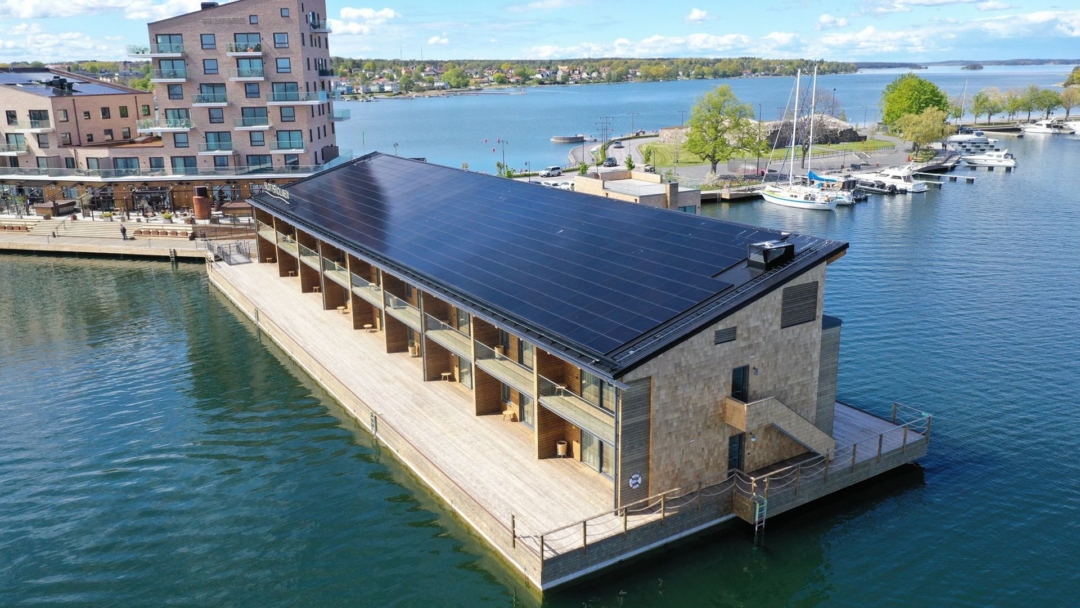
Video: Insertion system for tiled roof
About the author
TRITEC has specialised in the generation of solar power through photovoltaics for over 34 years. We are active worldwide in both photovoltaic wholesale and large-scale plant construction. In addition to our proven PV mounting system, we also offer our own intelligent system solutions for the planning, design and performance control of photovoltaic systems, as well as branded products from leading photovoltaic manufacturers.



